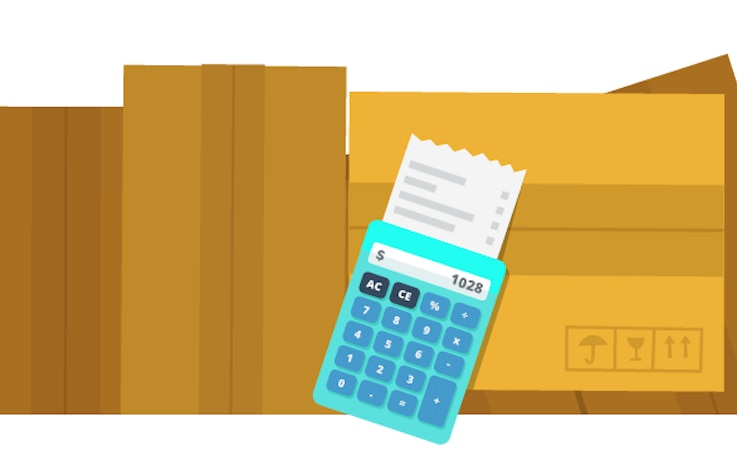When your business is small, an asset tracking solution may be the furthest thing from your mind, let alone your business wish list – that never-ending list of all the tools and technologies you wish you could fit in your budget. Nicole Pontius from Camcode joins us this week to explain why you should consider putting asset tracking back on that list.

6 business benefits for SMBs that use asset tagging
So, what is asset tracking?
Asset tracking is a method for tracking either fixed or moveable physical assets, often both. Sometimes referred to as asset management, asset tracking streamlines the monitoring, managing, and allocating of physical assets through the use of barcode labels or asset tags, which are affixed to physical assets and scanned by barcode readers.
Barcode labels allow individual assets to be assigned a unique identification number, making it simple to easily pinpoint the location of a specific asset, pull up maintenance schedules for equipment, determine the status of an asset or group of assets, and more simply by scanning a barcode label.
Because barcode labels eliminate the need for manual documentation and data entry, asset tracking eliminates much human error that can result in expensive mistakes that can delay workflows and interrupt the supply chain.
What assets should I be tracking?
Asset tags and barcode labels are useful for tracking both fixed and moveable assets, but that doesn’t mean that every asset your company owns or manages must be labeled. Good candidates for asset tags include:
- High-value assets, such as assets that are depreciatedMoveable assets and assets that require regular maintenance, repairs, or replacement parts, such as equipment and machinery.
A few examples of assets that small and medium-sized businesses (SMBs) should consider labeling include:
- IT hardware, such as computers and servers
- Audio-visual equipment, such as projectors
- Fixed assets (Property, Plant, and Equipment – or PPE)
- Capital equipment, such as machines and tools
- Furnishings, such as desks and filing cabinets
Tracking fixed assets means that you can easily gather data on the status of company assets and facilitate streamlined processes, such as inventory management and depreciation for accounting. For moveable assets, using asset tags or barcode labels to give each item a unique identification number means that, using a barcode scanner, you can easily identify assets and quickly pinpoint an asset’s location throughout your company. Likewise, moveable assets are often depreciable as well.
Benefits of Asset Tracking for SMEs
Organizations that implement effective asset tracking solutions reap numerous benefits, including increased efficiency, greater accuracy in record-keeping, streamlined documentation requirements coupled with substantial time savings, and more.
Asset tracking provides a foundation for seamless workflows and management of multiple business functions, including:
1. Monitoring physical assets
The most obvious use of asset tracking solutions, SMEs are better able to monitor physical assets as they move throughout the organization or are transferred between departments. This enables SMEs to gain a better view of the company’s complete physical asset portfolio, more easily identify needs, and eliminate wasteful, unnecessary duplication of assets through better resource management.
2. Automated inventory control
Effective asset management leads to efficient and accurate inventory management while eliminating many of the headaches typically associated with inventory control . For instance, taking periodic physical inventory counts is still necessary for most organizations, but when assets are tagged or labeled they can be quickly scanned rather than manually verified to match identification numbers to records. Overall, it’s a much simpler process.

3. Streamlined maintenance management
For companies that manage assets requiring periodic or ongoing maintenance, asset tracking solutions are a lifeline. Too often, maintenance management is a process that falls behind when companies rely on manual documentation to keep maintenance schedules on track. With asset tracking solutions, asset management software can provide alerts to ensure scheduled maintenance is never an afterthought.
4. Preventing loss
In the course of conducting day-to-day business, it’s easy to misplace important assets. Devices, equipment, and other items that frequently move throughout an organization may not always be accurately documented. When the same asset is needed again, the most recent records don’t reflect the asset’s current location and are unable to be located. It’s this shortcoming that leads to many companies unnecessarily duplicating assets.
5. Regulatory management and compliance
More and more SMEs are serving heavily regulated industries; thus, these companies must be equipped with efficient processes to capture and report on data to prove compliance. Not only does asset tracking enable businesses to stay on top of regulatory requirements such as equipment testing, calibration, and maintenance, but when coupled with a comprehensive asset tracking software solution, such as maintenance management software, it can completely streamline your reporting requirements. Many companies can generate detailed reports in just minutes, whereas compiling the same data manually would take days or even weeks.
6. Providing better service to customers
Ultimately, the culmination of the other benefits offered by asset tracking enables SMEs to perform better, maintain better working equipment and tools, and better allocate resources to complete projects both on time and on budget. The end result is increased customer satisfaction. While you’re reducing unnecessary spending by taking better control over your assets, you’ll also boost profits by earning repeat business and recommendations from satisfied customers.

Why using Excel as an asset tracking method fails SMBs
Budget restrictions are just one reason many SMBs start out with very rudimentary asset tracking methods when the need first arises to maintain documentation of company assets. Often, this takes the form of an Excel spreadsheet. This is not to discount the value of Microsoft Excel; it’s a valuable tool with myriad uses and benefits in the business world. Asset tracking just doesn’t happen to be one of them.
Why do spreadsheets fail? First, manual data entry is unreliable as it introduces the likelihood of human error. There’s also the issue of conflicting copies, particularly if you’re not using a cloud-based solution such as a file-sharing platform (e.g., Google Drive) that enables everyone to have access to the most up-to-date file at all times.
In fact, multiple team members can actively work in a Google Drive spreadsheet – known as a Google Sheet – without creating conflicts. The ability to have an always-up-to-date file with the most recent data is one of the key advantages of cloud-based software solutions for SMEs. But even that’s not enough to make a spreadsheet a viable method for tracking company assets.

When the accuracy and completion of data records relies entirely on humans, mistakes are bound to happen. Spreadsheets allow you to sort your assets by type and location, document descriptions and images, create relationships to other assets, and even document the location of moveable assets throughout your organization, such as transfers of IT equipment between departments.
However, none of this is 100% accurate when relying on manual data entry, not to mention a simple spreadsheet doesn’t always integrate seamlessly with accounting software without manually updating the most recent spreadsheet. What if someone forgets to document that an asset was transferred to another department? What if someone makes an error in documenting a part number? What if an asset is no longer usable, but this is not reflected on the spreadsheet? Many opportunities for errors exist, all of which can result in inaccuracies in your accounting and end up costing your business more money.
A Scalable Solution for SMEs
Track assets as they come into your company. The most successful enterprises once started as a small or medium business. Employing asset tracking best practices from the start allows a company to successfully scale. Assigning assets a unique identification number (not the product’s actual serial number) eliminates the possibility of two assets sharing the same serial number, which compromises data integrity.
Tagging your assets with barcode labels and asset tags in the early stages of your company’s growth is a far simpler initiative than realizing later that you must implement an asset tracking solution in order to be effective. Simply put, the fewer assets your company has when first implementing an asset tracking solution, the less expensive – in terms of actual dollar amount – your initial investment will be.

This allows you to effectively scale up as needed as you acquire additional assets, and if you choose the right asset tags and barcode labels with the durability needed to last the typical lifespan of your assets, you’ll never be faced with completely overhauling your asset tagging system.
Asset tagging and barcode solutions are the foundation for effective asset tracking and inventory control. No longer a solution limited to major enterprises due to prohibitive costs, SMEs are increasingly taking advantage of the benefits of asset tagging and barcode labeling solutions to optimize workflows, streamline inventory control, better manage assets, and improve performance to bolster the company’s bottom line.








